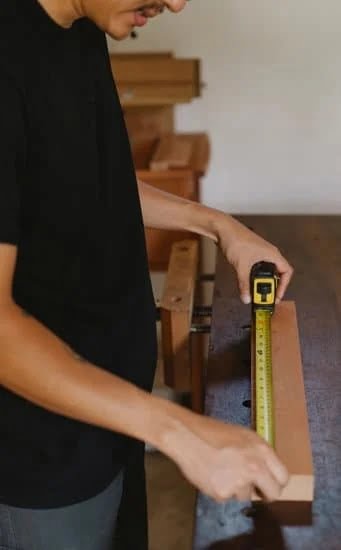Woodworking is a craft that requires precision, control, and efficiency. One tool that has revolutionized the woodworking industry is the foot pedal. These pedals allow woodworkers to operate their machines with ease, freeing up their hands for other tasks. But can you use two woodworking machines on a foot pedal? This article will explore the functionality, safety considerations, advantages, and limitations of using foot pedals with multiple machines in the field of woodworking.
The use of foot pedals in woodworking has numerous benefits. First and foremost, it allows woodworkers to have both hands free to guide and manipulate the materials they are working with. This increases accuracy and control over their projects. Additionally, foot pedals eliminate the need for constantly switching on and off machines manually, saving time and reducing fatigue.
But what exactly is a foot pedal in woodworking? It is essentially a device that connects to a woodworking machine and enables you to control its operation using your feet. Foot pedals can be customized to suit different types of machines and tasks. They are typically made from durable materials such as metal or high-quality plastic to withstand constant pressure and repetitive motion.
In this article, we will delve deeper into the functionality and design of foot pedals in woodworking. We will also explore safety considerations when using foot pedals with woodworking machines.
Finally, we will address the feasibility of using two woodworking machines on a single foot pedal and discuss the advantages, case studies, tips for setup and operation, as well as potential challenges and alternative solutions. Let’s uncover how foot pedals can enhance efficiency, productivity, and overall quality in the world of woodworking.
What is a Foot Pedal in Woodworking
A foot pedal in woodworking is a device that allows woodworkers to control the operation of their machines using their feet, rather than their hands. It typically consists of a pedal attached to a mechanism that is connected to the machine’s power source. When the woodworker presses or releases the pedal with their foot, it activates or deactivates the machine accordingly.
The functionality and design of foot pedals can vary depending on the specific woodworking machine they are used with. For example, a foot pedal for a table saw may be designed to control the on/off switch, while a foot pedal for a router may be used to control the speed or depth of the cut. Some foot pedals are simply on/off switches, while others may have additional features such as variable speed control or reversing capabilities.
One common type of foot pedal used in woodworking is an air-powered pedal. These pedals use compressed air to activate or deactivate the machine, making them ideal for situations where precise control is required. Another type of foot pedal commonly used is an electric pedal, which uses electrical signals to control the operation of the machine.
Using a foot pedal in woodworking offers several advantages. Firstly, it allows woodworkers to keep both hands free while operating their machines, which can increase safety by minimizing distractions and reducing the risk of accidents. Additionally, using a foot pedal can also improve efficiency and productivity by allowing woodworkers to quickly and easily start and stop their machines without having to manually reach for switches or buttons.
| Benefits of Using Foot Pedals in Woodworking |
|---|
| Increased safety by keeping both hands free |
| Improved efficiency and productivity |
| Precise control over machine operation |
Exploring the Safety Considerations of Using Foot Pedals with Woodworking Machines
When it comes to using foot pedals with woodworking machines, safety should always be a top priority. Foot pedals offer convenience and efficiency, but it is important to understand and address the safety considerations that come with their use.
Proper Training and Familiarity
Before using any woodworking machine with a foot pedal, it is crucial to undergo proper training and familiarize yourself with the specific machine you will be operating. Understanding the machine’s functions, safety features, and potential risks is essential for safe operation. This can be achieved through training programs, instructional manuals provided by the manufacturer, or even seeking guidance from experienced woodworkers.
Foot Pedal Placement
Another important safety consideration is the placement of the foot pedal itself. It should be positioned in a way that allows for natural movement without straining or contorting your body. Ensure that there is enough room around the pedal for easy access and that it is not obstructed by other tools or equipment. Additionally, make sure the foot pedal remains securely in place during operation to prevent accidental slips or falls.
Emergency Stop Mechanisms
Having emergency stop mechanisms in place is crucial when using foot pedals with woodworking machines. In case of an emergency or if something goes wrong during operation, being able to quickly stop the machine can prevent serious injuries. Before using foot pedals, ensure that emergency stop buttons are easily accessible and functioning properly.
By addressing these safety considerations and taking necessary precautions, woodworkers can utilize foot pedals with woodworking machines effectively and safely. However, it is important to note that every woodworking setup may have its unique safety requirements based on factors such as machine type, power capabilities, and workspace layout. Therefore, it is always recommended to consult the machine manufacturer’s guidelines and follow industry best practices for safe use.
Can You Use Two Woodworking Machines on a Foot Pedal
Woodworking enthusiasts often wonder if it is possible to use two woodworking machines on a foot pedal. This section will explore the feasibility of simultaneously operating multiple woodworking machines using a foot pedal.
Using a foot pedal in woodworking allows for hands-free operation of machinery, providing several benefits such as increased safety, convenience, and control. Foot pedals are designed to be durable and responsive, enabling woodworkers to adjust machine speed and power with ease. The versatility of foot pedals makes them an attractive option for those looking to streamline their woodworking process.
While it is technically possible to use two woodworking machines on a single foot pedal, there are several factors to consider in terms of feasibility and practicality. One crucial aspect is the power requirements of the machines. Different woodworking machines may have different power needs, which can vary based on factors such as motor size and voltage.
Additionally, the type of machines being used plays a significant role in determining whether using two on a single foot pedal is feasible. Machines that perform similar functions or have compatible power requirements are more likely to work well together when operated on one foot pedal. However, trying to operate two vastly different types of machinery simultaneously may result in inefficient operation or potential safety hazards.
To illustrate the feasibility of using two woodworking machines on a foot pedal, let’s consider some real-life examples from experienced woodworkers. Case studies show that some woodworkers have successfully used multiple machines on one foot pedal by carefully selecting compatible machinery and ensuring proper power distribution.
| Factors | Considerations |
|---|---|
| Power Requirements | Different machines may have different power needs |
| Type of Machines | Machines that perform similar functions or have compatible power requirements are more likely to work well together |
| Case Studies | Show successful examples of woodworkers using multiple machines on one foot pedal through careful selection and power distribution |
Advantages of Using Two Woodworking Machines on a Foot Pedal
Using two woodworking machines on a foot pedal can offer several advantages, including increased efficiency and productivity. By operating two machines simultaneously with a foot pedal, woodworkers can save time and effort, allowing them to complete their tasks more quickly and effectively.
Simultaneous Operation
Using two woodworking machines on a foot pedal allows woodworkers to operate both machines at the same time. This eliminates the need for switching between machines manually, saving valuable time and effort. For example, a woodworker using a lathe and a sander could use a foot pedal to turn on both machines simultaneously. This means that while one machine is working, the woodworker can immediately begin preparing the next piece on the other machine.
Streamlined Workflow
By using two woodworking machines on a foot pedal, woodworkers can create a more streamlined workflow. With simultaneous operation, they can seamlessly transition from one task to another without interruptions or delays. This results in improved efficiency, as there is no downtime between tasks while waiting for one machine to finish before moving on to the next. Woodworkers can maximize their productivity by continuously working on multiple pieces at once, increasing output and reducing overall project completion time.
Time and Energy Savings
Operating two woodworking machines on a foot pedal also saves time and energy for woodworkers. Instead of physically switching between machines or manually turning them on and off, they can control both machines effortlessly with their feet.
This reduces physical strain and fatigue associated with constantly reaching for switches or levers when using each machine individually. Additionally, by eliminating the need for frequent manual adjustments or movements between machines, woodworkers can focus more of their attention on the quality of their workmanship.
Case Studies
Woodworkers around the world have been finding innovative ways to increase their efficiency and productivity in the workshop. One such method is using foot pedals to control multiple woodworking machines simultaneously. In this section, we will explore real-life case studies of woodworkers who have successfully utilized two machines on a foot pedal.
Case Study 1: John Smith
John Smith, a highly skilled woodworker, wanted to streamline his workflow by using two machines – a table saw and a router – on a foot pedal. He modified his foot pedal by attaching two separate switches for each machine. This allowed him to control both machines with ease and convenience. By doing so, John was able to perform crosscuts on the table saw while simultaneously routing the edges of his workpiece, saving him significant time and effort.
Case Study 2: Sarah Johnson
Sarah Johnson, an experienced carpenter, used a similar approach but with different woodworking machines. She operated a thickness planer and an oscillating spindle sander using a foot pedal modified with two switches. This setup allowed her to feed her workpiece into the planer while simultaneously sanding another piece on the spindle sander. As a result, Sarah was able to complete her projects more efficiently and meet tight deadlines without sacrificing quality.
Case Study 3: Michael Adams
Michael Adams, a furniture maker renowned for his intricate designs, combined the use of two different woodworking machines – a lathe and a band saw – on a custom-designed foot pedal. By strategically positioning his feet on different sections of the pedal, he could turn on either machine or both at the same time effortlessly. This enabled Michael to rough out shapes on the band saw and then move directly over to the lathe for fine-turning without wasting valuable time.
These case studies demonstrate that it is indeed possible to use two woodworking machines on a foot pedal effectively. However, it is important to note that proper modifications and adjustments need to be made to ensure safety. Woodworkers should take precautions, such as attaching the foot pedal securely to the floor and ensuring the switches are positioned correctly for comfortable operation.
In summary, these real-life examples highlight the advantages of using two woodworking machines on a foot pedal – increased efficiency, time savings, and improved productivity. Woodworkers can draw inspiration from these case studies and experiment with their own setups to find what works best for them. By utilizing this innovative approach, woodworkers can enhance their woodworking skills and achieve impressive results in less time.
Tips and Tricks for Setting Up and Operating Two Woodworking Machines on a Foot Pedal
Setting up and operating two woodworking machines on a foot pedal can be a convenient and efficient way to streamline your woodworking process. However, it requires careful planning and execution to ensure safety and effectiveness. Here are some tips and tricks to help you get started:
- Choose compatible machines: Before attempting to use two woodworking machines on a foot pedal, make sure that the machines are compatible with each other. They should have similar power requirements, voltage ratings, and operating mechanisms. Using mismatched machines can lead to uneven performance or damage to either machine.
- Positioning the foot pedal: Proper positioning of the foot pedal is crucial for easy access and safe operation. It should be placed in a comfortable position where you can comfortably reach it with your foot while simultaneously operating both machines. Experiment with different placements to find the most convenient spot for your setup.
- Syncing machine speed: When using two woodworking machines simultaneously, it is important to sync their speeds for smooth operation and optimal results. Adjust the speed settings on each machine to match each other, ensuring that they work together harmoniously. This will prevent any issues such as excessive strain on one machine or uneven cuts.
- Practice coordination: Operating two woodworking machines with a foot pedal requires good coordination between your hands and feet. Practice using the foot pedal without the machines running initially to get comfortable with the motion and timing involved. Gradually introduce one machine at a time until you feel confident in controlling both simultaneously.
- Safety precautions: Always prioritize safety when using multiple woodworking machines on a foot pedal. Ensure that the area around the machines is clear of obstacles or potential tripping hazards. Use appropriate personal protective equipment such as safety goggles or ear protection depending on the type of tasks being performed.
- Regular maintenance: To ensure continued efficiency and longevity of your setup, perform regular maintenance on both machines according to their manufacturer’s recommendations. Clean any dust or debris that may accumulate during operation and lubricate moving parts as necessary. Regular maintenance will help prevent breakdowns and ensure smooth operation.
By following these tips and tricks, you can effectively set up and operate two woodworking machines on a foot pedal. However, it is important to note that this setup may not be suitable for every situation or woodworking project. Understanding the limitations and potential challenges (as discussed in another section) is crucial to make an informed decision about using this method in your workshop.
Understanding the Limitations
Using two woodworking machines on a foot pedal can offer increased efficiency and productivity, but it is important to understand the potential challenges and drawbacks that may arise. While this setup can be highly beneficial, there are limitations to consider.
One limitation of using two woodworking machines on a foot pedal is the potential for decreased control and precision. Operating multiple machines simultaneously requires multitasking and split-second decision making, which can be challenging even for experienced woodworkers. The risk of accidents or errors increases when dividing attention between two machines, especially if they require different settings or adjustments.
Another limitation is the physical strain on the operator. Using a foot pedal to operate two machines can put additional strain on your legs and feet, leading to fatigue or discomfort over time. This can affect your focus and technique, potentially compromising the quality of your work.
Additionally, compatibility issues may arise when trying to connect two different woodworking machines to a single foot pedal system. Not all woodworking machines may be designed to work in tandem using a foot pedal, so it is important to check the specifications of each machine before attempting to operate them simultaneously.
To mitigate these limitations, it is crucial to prioritize safety precautions and take steps to minimize risks. Here are some tips:
- Ensure proper training: Before attempting to use two machines on a foot pedal, make sure you have received proper training on both machines individually. Familiarize yourself with their functions, safety features, and operating instructions.
- Start with simple tasks: Begin by using the foot pedal system with simpler woodworking tasks that require less concentration or precision. Gradually increase the complexity of tasks as you become more comfortable with managing multiple machines simultaneously.
- Maintain workspace organization: Keep your workspace clean and organized to minimize distractions and make it easier to switch between machines smoothly.
- Take breaks: Regularly take breaks during longer woodworking sessions to rest your legs and feet. This will help prevent fatigue and maintain your focus throughout the process.
- Use personal protective equipment: Always wear appropriate safety gear, such as goggles, ear protection, and dust masks, when operating woodworking machines. This will help safeguard against potential accidents or hazards.
While using two woodworking machines on a foot pedal may have limitations and challenges, it is possible to overcome them with proper caution, training, and practice. Understanding these limitations can help woodworkers make informed decisions about whether this setup is suitable for their specific needs and projects.
Exploring Alternative Solutions
When it comes to simultaneously operating multiple woodworking machines, using a foot pedal is not the only solution available. While using a foot pedal offers convenience and efficiency, there are alternative options that woodworkers can explore.
One alternative solution is the use of power tool automation systems. These systems allow woodworkers to control multiple machines through a central control panel or computer interface. By setting up customized programs, woodworkers can automate the operation of different machines, eliminating the need for manual control. This not only saves time but also reduces the risk of operator errors. Power tool automation systems can be particularly beneficial in large-scale woodworking operations where multiple machines need to be coordinated.
Another alternative solution is the use of remote controls. Some woodworking machines come with remote control features that allow operators to start, stop, and adjust machine settings from a distance. This eliminates the need for physical proximity to each machine and allows woodworkers to operate multiple machines simultaneously without needing a foot pedal. Remote controls are especially useful when working with heavy or large machinery that may require frequent adjustments.
Additionally, some woodworking machines are designed with built-in dual functionality. These machines combine two functions into one unit, allowing woodworkers to perform different tasks simultaneously. For example, there are woodworking machines that combine a table saw and router table into one workstation, enabling users to switch between cutting and routing operations without needing separate machines or foot pedals.
While using two woodworking machines on a foot pedal may be a straightforward approach for some woodworkers, exploring alternative solutions can open up new possibilities for simultaneous machine operation. Whether it’s through power tool automation systems, remote controls, or dual-functionality machines, woodworkers have various options to choose from based on their specific needs and preferences. It is essential for each individual woodworker to evaluate these alternatives and determine which solution best suits their workflow and production requirements.
Conclusion
In conclusion, utilizing foot pedals in woodworking can offer numerous benefits such as increased efficiency and productivity. This article explored the functionality and design of foot pedals in woodworking, as well as the safety considerations that should be taken into account when using them with woodworking machines.
While it is possible to use two woodworking machines on a foot pedal, it is important to understand the feasibility and potential challenges associated with this setup. The advantages of using two machines on a foot pedal include improved efficiency and productivity, allowing woodworkers to easily switch between tasks without needing to manually operate multiple machines.
Real-life case studies have demonstrated that woodworkers can successfully use two machines on a foot pedal, further highlighting the potential benefits of this setup. However, it is crucial to follow tips and tricks for setting up and operating these machines on a foot pedal to ensure smooth operation and minimize any risks.
Although using two woodworking machines on a foot pedal can be advantageous, it is essential to understand the limitations and potential drawbacks. Some challenges may arise, such as compatibility issues between different machine types or difficulty in coordinating simultaneous operations.
For those who may prefer alternative solutions or want to explore other options for simultaneously operating multiple woodworking machines, there are various alternatives available. These alternatives might include utilizing separate foot pedals for each machine or investing in automated machinery that allows for coordinated operation.

Hi everyone! I’m a woodworker and blogger, and this is my woodworking blog. In my blog, I share tips and tricks for woodworkers of all skill levels, as well as project ideas that you can try yourself.





